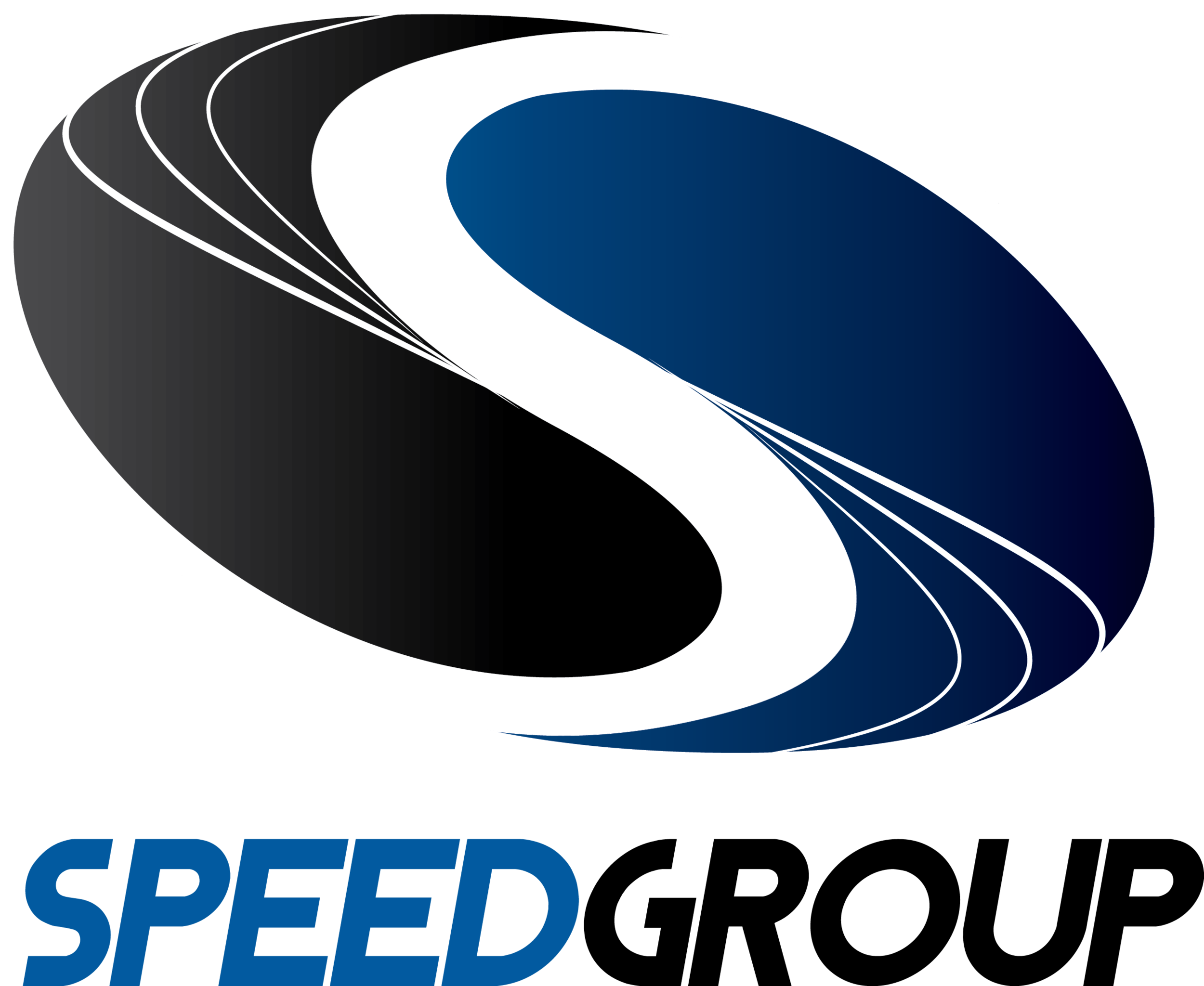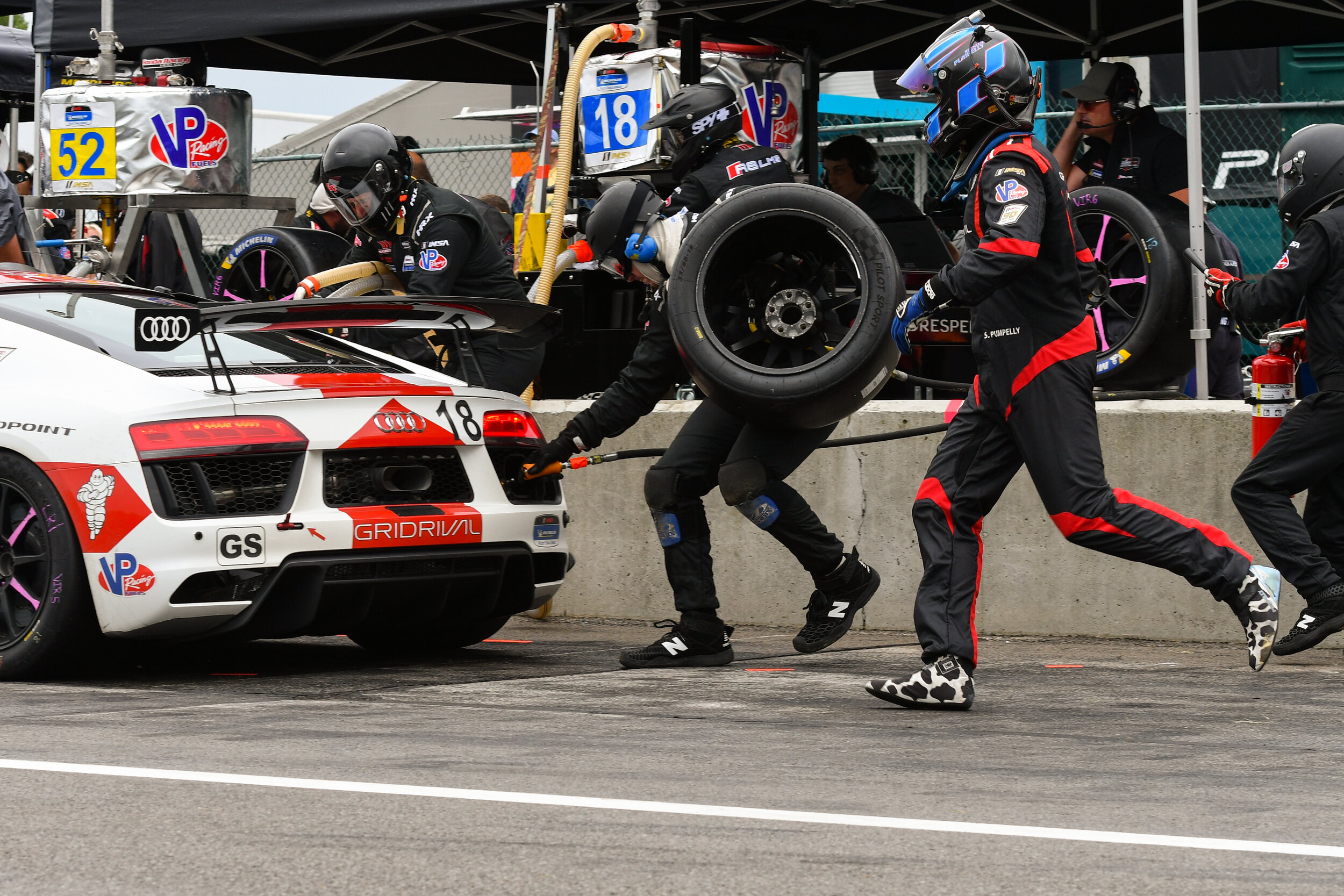New Tire Magic
Hardpoint Motorsports’ No. 18 Moorespeed/GridRival Audi R8 LMS GT4 completing a pit stop at VIRginia International Raceway.
After a successful climb up the racing latter, David Martinez became a household name in 2006 when he achieved the best ever debut by a Mexican driver in a premier open-wheel series (Champcar/Indycar). In addition to his achievements on track, David has also become a successful team owner, engineer, mentor, and coach, and has helped groom young talented drivers that have risen the highest levels of motorsports, including Formula 1.
Written by: David Martinez, Partner at Speed Group, DEForce Racing and Martiga
“It is so easy to overestimate the importance of one defining moment and underestimate the value of making small improvements on a daily basis. Too often, we convince ourselves that massive success requires massive action. Whether it is losing weight, building a business, writing a book, winning a championship, or achieving any other goal, we put pressure on ourselves to make some earth-shattering improvement that everyone will talk about¹.”
It’s a sunny but chilly morning at MotorSports Ranch, a 2.3- mile road course located in south Houston. I’m about to get in to a Champ Car for the first time – it’s October 2006. A 2.65 Liter turbo V8 Ford–Cosworth XFE makes up the engine and black Bridgestones (hard compound) are the tires. I was nervous and anxious as I exited the pits. The first time I went to full power felt unreal.
On this day, I ran for about 150 miles while getting comfortable with the car and doing pit practices. As the end of the session crept up, it was clear that a qualifying simulation would be next. But before I got back out, I was advised by my engineering group that they would notify me when the new tires were are at optimum potential in order to extract everything I could out of them.
(I had first learned to work on new tires back in Europe during 2004 while racing Formula Renault V6. During my first test day in this series, I learned that European motorsports took new tires very seriously. The whole strategy for a qualifying effort back then was set on getting the best run out of a new tire. This was, however, something achieved by feel, experience, past data, and perfect execution.)
So I’m back in my Champ Car at MSR Houston and these words come on the radio, “Tires at target, push!”. This was my first ever new set of new tires up to speed in a Champ Car. I will never forget the next 90 seconds. It felt like I had endless grip, and my sectors kept getting better and better. I knew that this moment would not last long so I pushed as hard as I could. Every other lap I did before this moment had prepared me for this small gap of special grip - a grip that would be fleeting and would dictate how my test went.
1% means everything in racing. In IndyCar, it is the difference between first and last, and although it is hard to quantify, most drivers and engineers would agree that a big chunk of this can come from new tires. On a regular weekend, it’s really hard to put a weight on new tires, but most drivers/engineers and experts would agree that new tires give at least 1% in lap time on normal conditions. Again, new tires have a special window. As most things in life, this window does not last forever. It is sometimes so small that it does not even last for a lap.
It is no secret that a new tire gives such an advantage, that when a driver gets the best grip out of it on his/her fast lap, the results can be breathtaking. It even leaves some others drivers and teams that did not hit this point asking themselves, “Are they cheating? Is he from another planet? Is my car not good enough? Am I not good enough?”.
These days drivers do all they can to rely on themselves and try to set “the perfect lap”. But here’s the thing - the perfect lap is a sum of many factors going on in a session and sometimes drivers/teams forget that. Was the track at its best? Did I get a draft? Where the tires at their best? Did I nail every corner? Did I get a tail wind on the long straight? Was I low on fuel (weight)?
In the past, professional drivers were very involved with all aspects of the game. Currently, young drivers are taught to go out there and get their best performance by themselves. The best performance is necessary for a driver to have success on any given day. However, if you compare two drivers of similar talent and similar equipment, and one of those drivers hits the lap time when the new tire is at its best, and the other one doesn’t, it will make the fastest driver appear unparalleled.
“One of the biggest things about finding lap time on new tires that is important to remember is that your lap time isn’t made up in one corner. Don’t try to find three tenths in one corner. Try to find half a tenth in 10 corners. It’s so easy to overdrive on new tires thinking that you have to find all these big chunks of time. That’s not usually how it works. At the last race of the Indycar season at Laguna, lap times were very tight and it’s a track that’s notoriously difficult to pass on, so qualifying is even more important than normal. We were really struggling to get lap time out of our car and hadn’t been in the top 10 once all weekend. Come qualifying, I knew if I tried to find these big chunks of lap time, and force the issue, I would make mistakes and lose time. I just focused on my car and finding a little bit in every corner. Not over driving anywhere. We ended up in the Firestone Fast 6 and started P5. There were other cars that may have been faster, but we maximized the car we had on new tires by focusing on not over driving at a track that can bite you if you do.”
When you’re going through the lap time results and you’re looking for the last few tenths and wondering, ask yourself. Did I get the most out of my tires?
Share your experiences with us.

